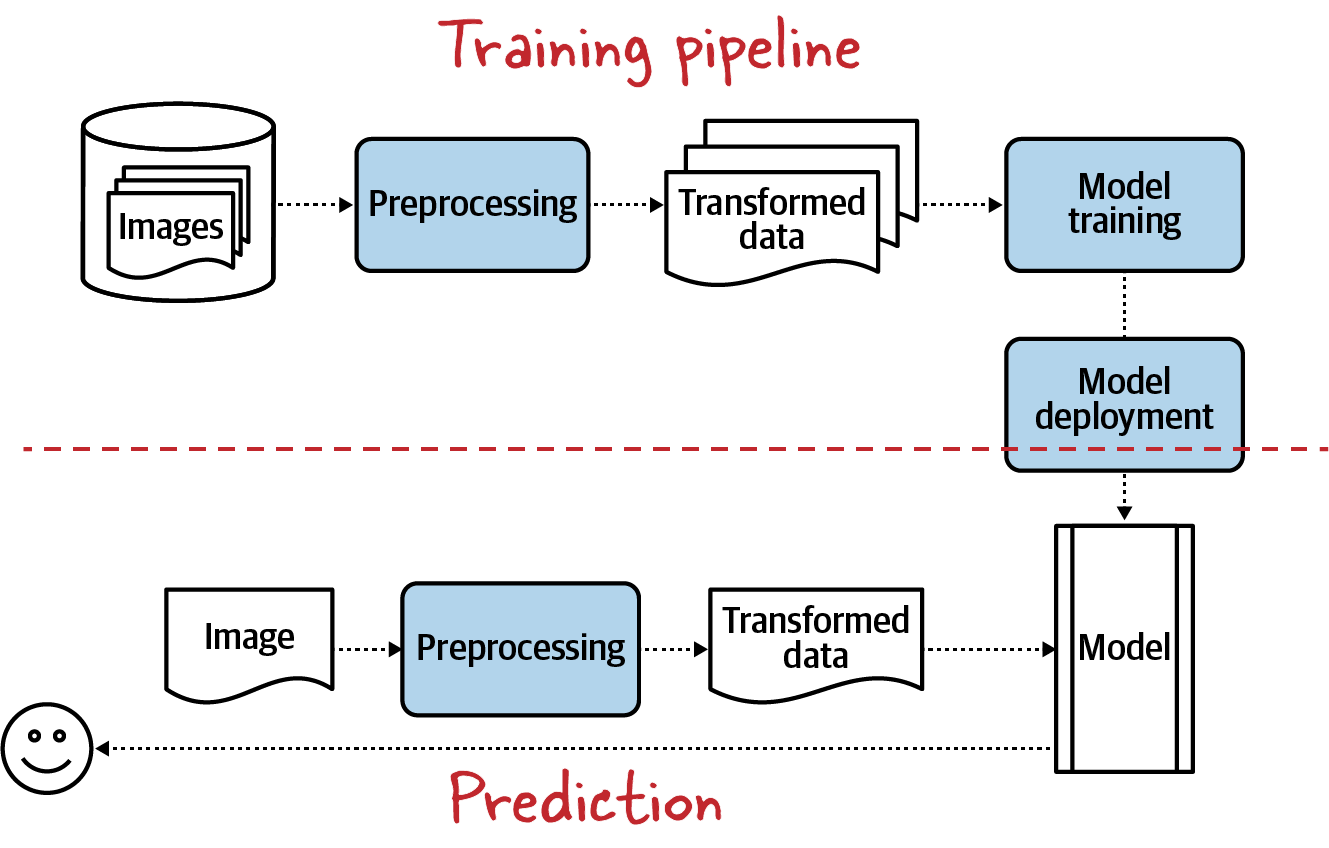Chapter 6. Preprocessing
In Chapter 5, we looked at how to create training datasets for machine learning. This is the first step of the standard image processing pipeline (see Figure 6-1). The next stage is preprocessing the raw images in order to feed them into the model for training or inference. In this chapter, we will look at why images need to be preprocessed, how to set up preprocessing to ensure reproducibility in production, and ways to implement a variety of preprocessing operations in Keras/TensorFlow.

Figure 6-1. Raw images have to be preprocessed before they are fed into the model, both during training (top) and during prediction (bottom).
Tip
The code for this chapter is in the 06_preprocessing folder of the book’s GitHub repository. We will provide file names for code samples and notebooks where applicable.
Reasons for Preprocessing
Before raw images can be fed into an image model, they usually have to be preprocessed. Such preprocessing has several overlapping goals: shape transformation, data quality, and model quality.
Shape Transformation
The input images typically have to be transformed into a consistent size. For example, consider a simple DNN model:
model=tf.keras.Sequential([tf.keras.layers.Flatten(input_shape=(512,256,3)),tf.keras.layers.Dense(128,activation=tf.keras.activations.relu),tf.keras.layers.Dense(len(CLASS_NAMES),activation=
Get Practical Machine Learning for Computer Vision now with the O’Reilly learning platform.
O’Reilly members experience books, live events, courses curated by job role, and more from O’Reilly and nearly 200 top publishers.

